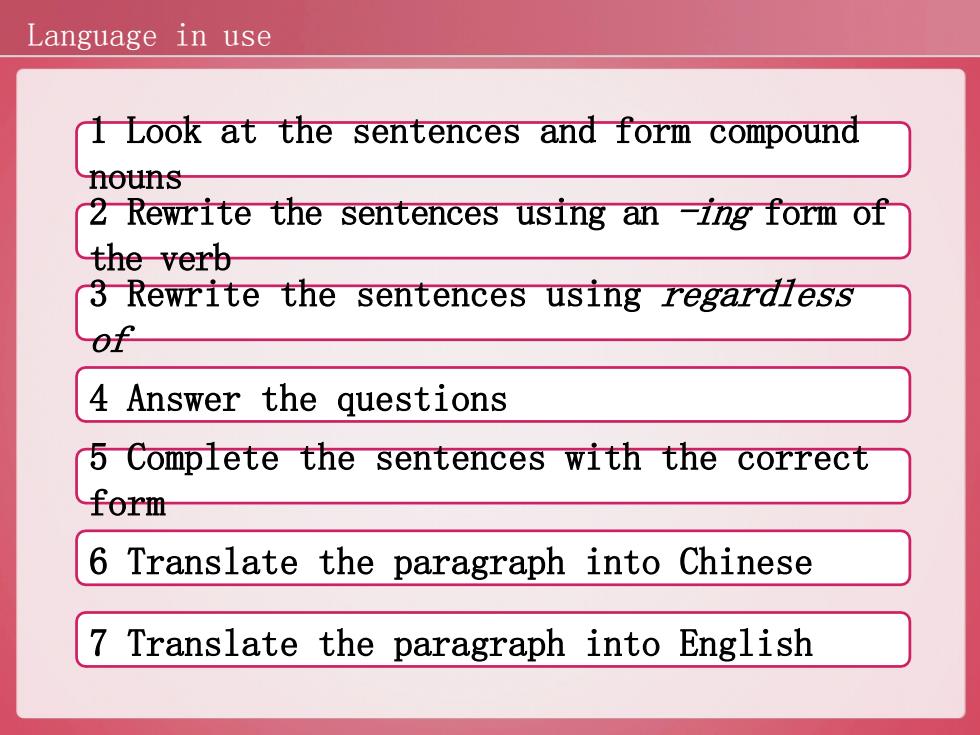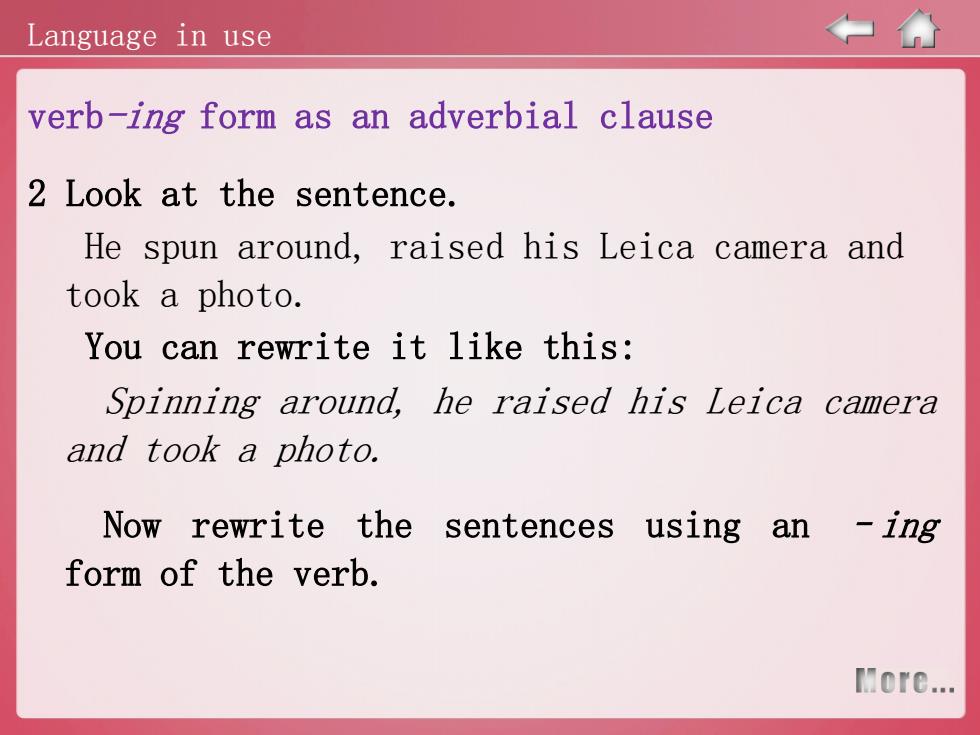
Language in use1 Look at the sentences and form compoundnouns2 Rewrite the sentences using an -ing form ofthe verb3 Rewrite the sentences using regardlessof4 Answer the questions5 Complete the sentences with the correctform6 Translate the paragraph into Chinese7 Translate the paragraph into English
Language in use 1 Look at the sentences and form compound nouns 2 Rewrite the sentences using an -ing form of the verb 3 Rewrite the sentences using regardless of 4 Answer the questions 5 Complete the sentences with the correct form 6 Translate the paragraph into Chinese 7 Translate the paragraph into English

Language in useWord formation: compound nouns1 Look at the sentences from the passage How welisten.The playwrightcreatesanddevelopsacharacter in just the same way that a composercreates and develops a theme.It is easythethatenoughtoseetheatergoer never is conscious of any of theseelements separately.More
Word formation: compound nouns 1 Look at the sentences from the passage How we listen. The playwright creates and develops a character in just the same way that a composer creates and develops a theme. It is easy enough to see that the theatergoer never is conscious of any of these elements separately. Language in use

Language in useNow form compound nouns to indicate:1 a writer of songongwriter2 a director of fifilm3 a scarf you wediractofd your Hheatlscarf4 a pack you carry on your backpack5 a stick you use to make your libipstick6 a lace you use to tie up your shoelace7 polish that you put on your mailspolishEND
Now form compound nouns to indicate: 1 a writer of songs 2 a director of films 3 a scarf you wear around your head 4 a pack you carry on your back 5 a stick you use to make your lips red 6 a lace you use to tie up your shoes 7 polish that you put on your nails Language in use songwriter film director headscarf backpack lipstick shoelace nail polish

Language in useverb-ing form as an adverbial clause2 Look at the sentence.He spun around, raised his Leica camera andtook a photo.You can rewrite it like this:Spinning around, he raised his Leica cameraand took a photo.Now rewrite the sentences using an -ingform of the verbMore
verb-ing form as an adverbial clause 2 Look at the sentence. He spun around, raised his Leica camera and took a photo. You can rewrite it like this: Spinning around, he raised his Leica camera and took a photo. Now rewrite the sentences using an –ing form of the verb. Language in use

Language in use1 The sailor swooped in on a shorter woman andkissed her.Swooping in on a shorter woman, the sailorkissed her.2 He acted impulsively, aimed accurately, andcommanded that the camera' s shutter close atthe most poignant moment.Acting impulsively and aiming accurately, hecommanded that the camera' s shutter close atthe most poignant moment.3 The photo grabs the viewer' s attention andnever seems to let go.More.Grabhing theviewethe nhotcattention
1 The sailor swooped in on a shorter woman and kissed her. Swooping in on a shorter woman, the sailor kissed her. 2 He acted impulsively, aimed accurately, and commanded that the camera’s shutter close at the most poignant moment. Acting impulsively and aiming accurately, he commanded that the camera’s shutter close at the most poignant moment. 3 The photo grabs the viewer’s attention and never seems to let go. Grabbing the viewer’s attention, the photo never seems to let go. Language in use